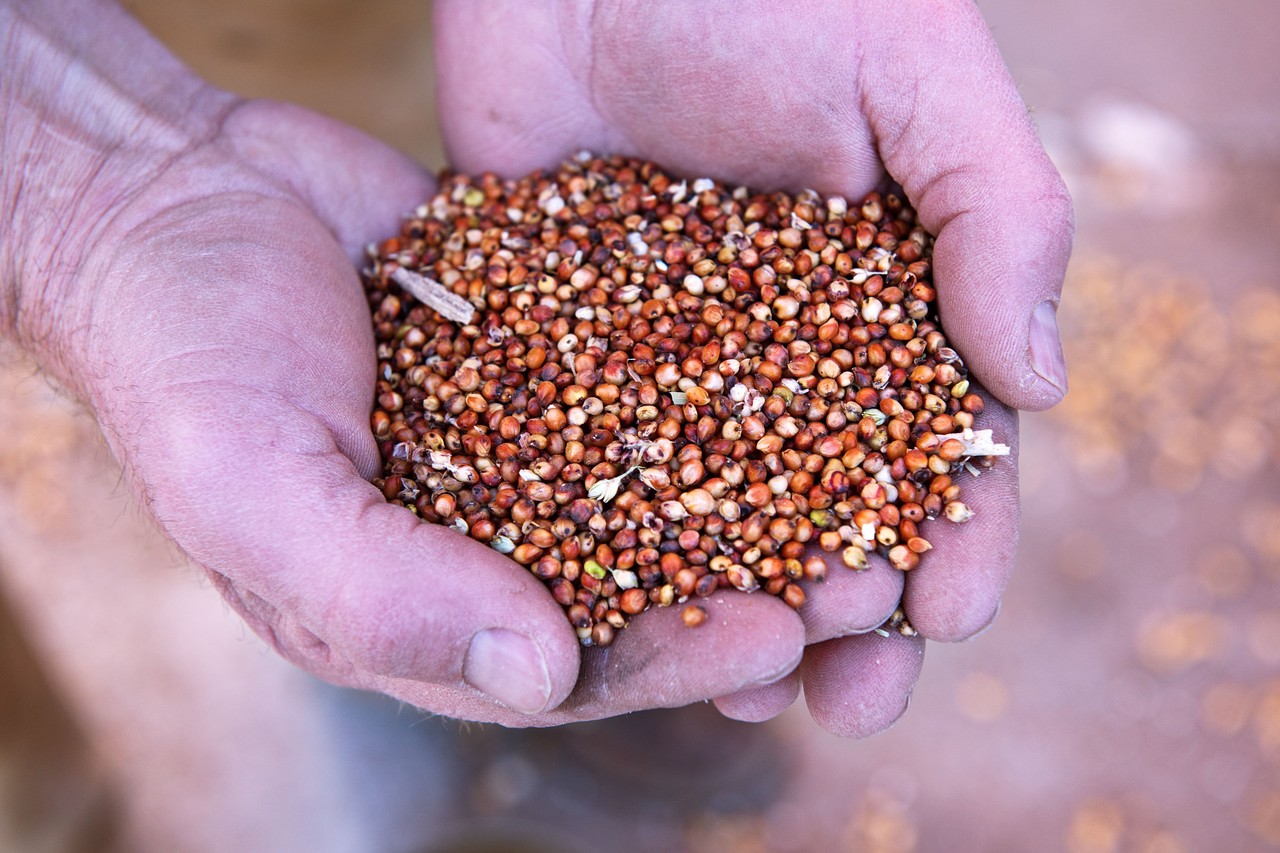
While many U.S. farmers grappled with lower grain prices last year, Mike Baker had an ace up his sleeve: sorghum.
The grain, long overshadowed by more-plentiful crops, suddenly is in high demand thanks to China’s soaring appetite for animal feed and a shift in its buying preferences away from foreign corn. A 15-fold increase in imports of U.S. sorghum by China over the past year has pushed its price above corn’s in parts of the U.S., a rarity that highlights how policy shifts by Beijing can have a far-reaching impact on the global grain trade.
Mr. Baker quickly sold most of his 800-acre sorghum crop after the fall harvest for the export market, capitalizing on the Chinese demand. “This was about the first year ever when I really felt like I was in control and was not afraid to name my price,” the 35-year-old Nebraskan said.
China’s buying pace has surprised many traders and grain merchants who deal in sorghum, a drought-hardy crop that also is known as milo in the Great Plains, its traditional growing region. Some Kansas grain elevators are offering farmers about 10% more for sorghum than for corn, inverting the roughly 10% premium corn usually fetches. There is no futures market for sorghum, so traders use corn futures to benchmark prices and manage risk.
The increased exports are benefiting large sorghum traders such as Archer Daniels Midland Co., as well as smaller grain handlers and transportation firms.
“It’s unlike anything I’ve seen in my career, and I’ve been doing this for about 30 years,” said Charlie Sauerwein, grain-merchandising manager with WindRiver Grain LLC, a Kansas company that ships grain by rail to U.S. ports. Increased sorghum shipments have helped WindRiver offset a recent decline in wheat deliveries due to soft export demand, he said.

In the first 11 months of 2014, shipments of U.S. sorghum to China jumped to 5.7 million metric tons valued at $1.3 billion from about 362,000 tons a year earlier, according to the U.S. Agriculture Department. Before 2013, China had bought only tiny amounts from the U.S., the world’s largest sorghum producer and shipper.
Many traders expect the pace of Chinese orders to slow because the U.S. doesn’t have enough sorghum to sustain it. The USDA estimated the U.S. produced 433 million bushels of sorghum last year, up from 392 million a year earlier. In contrast, the U.S.’s corn output was a record 14.2 billion bushels in 2014.
China also may begin to shift some sorghum orders to Australia as supplies from that country’s farmers become available in the spring, said Mike O’Dea, risk-management consultant for commodity brokerage INTL FCStone. That likely will push sorghum prices down somewhat from the current “extremely high” levels, said Mr. O’Dea, who represents grain elevators that buy sorghum.
Chinese companies are snapping up the grain to feed pigs, chickens and ducks because it is cheaper to import sorghum than to buy corn produced in China, analysts said. Domestic corn prices are high because China’s government has been buying farmers’ grain at a hefty premium to support their incomes, analysts said.
In addition to feed, some U.S. sorghum exported to China is used by its liquor industry for beverages including baijiu, the popular Chinese spirit, according to U.S. industry officials.
China’s imports of U.S. corn fell sharply last year after Beijing rejected shipments containing a genetic modification that it hadn’t approved. The country recently approved the biotech corn, prompting analysts to speculate that China may resume significant imports from the U.S. That, in turn, could dent China’s purchases of sorghum and other feed alternatives.
China’s Ministry of Agriculture declined to comment on grain-importing policies. Ma Wenfeng, a senior analyst at Beijing Orient Agribusiness Consultant Ltd., a state-linked consultancy, said corn likely will start to supplant sorghum because many Chinese livestock producers consider corn a higher-quality feed.
Analysts said U.S. sorghum has gained traction with China in part because no genetically engineered varieties are sold in the U.S., meaning less risk of a regulatory disruption like that which hit corn. It also isn’t subject to quotas that cap how much Chinese companies can import annually, as corn is.
In the U.S., sorghum recently has gained some traction in the food industry as a gluten-free grain, fueling demand beyond traditional buyers in the livestock and ethanol sectors. Still, the USDA is forecasting that exports in the 2014-15 season that ends in August will account for 62% of U.S. production, up from 31% two years ago.
In central Kansas, a big growing area, grain elevators are paying farmers 30 to 40 cents more per bushel for sorghum than for corn, which is currently selling for around $3.70 a bushel. Corn futures tumbled 40% in 2013 and about 6% in 2014, pressured by back-to-back bumper U.S. crops.
Mr. Baker, the Nebraska farmer, said his sorghum crop helped him offset lower prices for corn and wheat, his other crops, last year. Thanks to sorghum, “I’ll be very profitable for 2014,” he said.
Analysts said higher sorghum prices likely will encourage U.S. growers to plant more of it. Sorghum needs less water to grow than corn does, and seed costs are cheaper, farmers say.
Adam Baldwin, 34, who farms with his father in McPherson, Kan., said they likely will plant about 20% more acres with sorghum this spring. A delegation of Chinese grain buyers visited Mr. Baldwin’s farm last summer, and he is convinced the country will continue to be a significant purchaser of U.S. sorghum.
“I think we’re sitting really well for the future,” Mr. Baldwin said. “I don’t think this is a flash in the pan.”
By DAVID KESMODEL —Chuin-Wei Yap contributed to this article.
Source: U.S. Farmers Scramble to Supply Latest Hot Crop: Sorghum – WSJ

